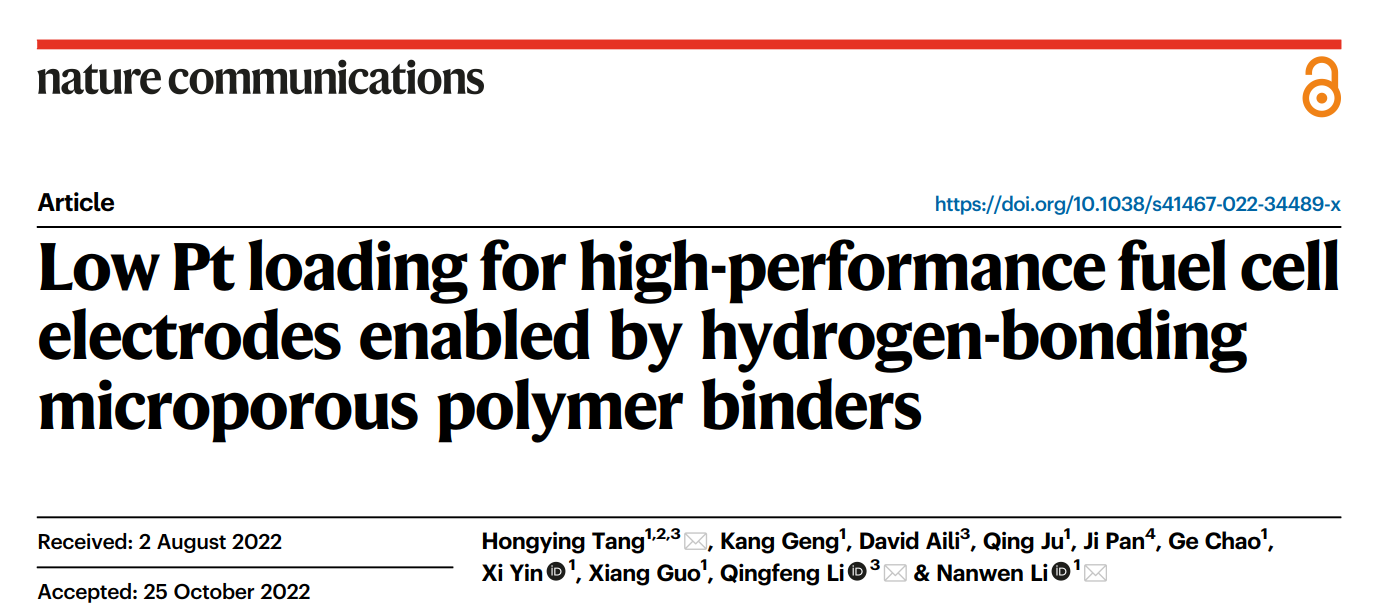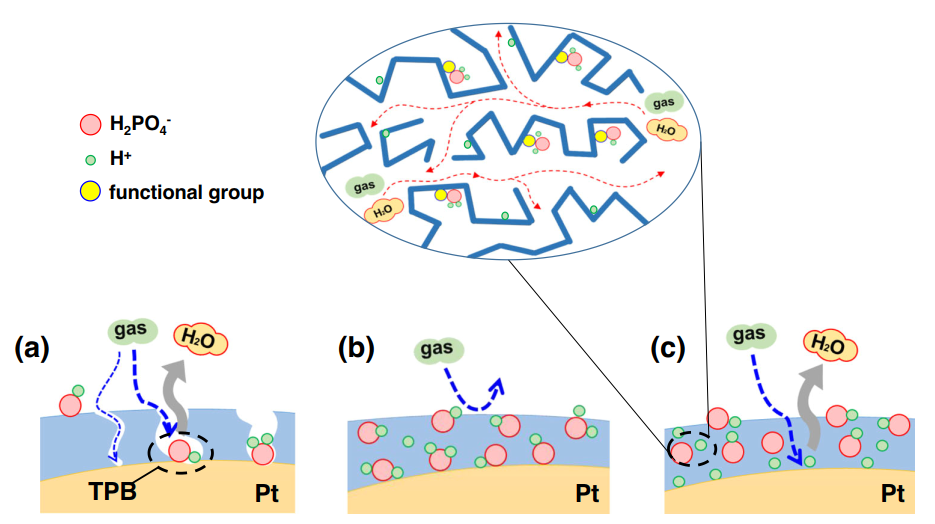Recently, a research team led by Prof. Nanwen Li from the Institute of Coal Chemistry (ICC) of the Chinese Academy of Sciences (CAS), cooperating with (Prof. Qingfeng Li’s group from Technical University of Denmark and Hongying Tang’s group from Tianjin Normal University), presented that the polymers of intrinsic microporosity (PIMs) with strong hydrogen-bonding functionalities can improve phosphoric acid (PA) binding energy and thus preferably uphold PA in the vicinity of Pt catalyst particles to mitigate the adsorption of PA on the Pt surface.
This study entitled “Low Pt loading for high-performance fuel cell electrodes enabled by hydrogen-bonding microporous polymer binders” was published in the Nature Communications on 08 December 2022.
This work was supported by National Natural Science Foundation of China (No. 21835005 and No. 52G15023), etc.

Figure 1

Figure 2

Figure 3
About the author:

Nanwen Li is engaged in the research and development of functional polymer separation membrane materials related to energy and environment for a long time. He received his doctor's degree in organic chemistry from the State Key Laboratory of Polymer Chemistry and Physics, Changchun Institute of Applied Chemistry, Chinese Academy of Sciences in 2009. He has successively worked as a Humboldt scholar and postdoctoral researcher at Hanyang University in South Korea, Martin Luther University in Germany, National Research Council in Canada, Penn State University and Georgia Institute of Technology. He has studied under William Koros, an internationally renowned membrane scientist and a member of the American Academy of Sciences. He also studied under Michael Guiver and Professor Young Moo Lee. His articles were published in international academic journals such as J. Am. Chem. Soc., Angew. Chem. Int. Ed., Energy Environ. Sci., Macromolecules, J. Membr. Sci. et al., with cumulative impact factors exceeding 100 and citations exceeding 700. Since 2014, he has been working at the Shanxi Institute of Coal Chemistry, Chinese Academy of Sciences.
Contact:
Email: linanwen@sxicc.ac.cn
© Institute of Coal Chemistry, Chinese Academy of Sciences, All Rights Reserved
Address: 27 South Taoyuan Road, Taiyuan, Shanxi, P.R.China
Tel: (86)351-4041627 Email: sxicc_en@sxicc.ac.cn